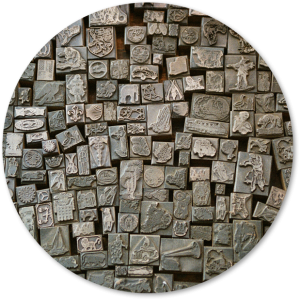#IoT in perspective
This morning, a twitter post by EMC caught my attention – not the article, but the image used to promote it (it’s the feature image of this post now): “30 billion devices expected to be connected and used in 2020”.
Gartner – in a news from about a year ago – had put it more reservedly: 25B devices in 2015 (maybe they’ve changed their estimates already).
Anyway: What strikes me is the permanent rise of this figure. It seems that each month the prognosis on the number of connected devices is increased by 10% (which means that by the end of March we’ll face a claim of 40B by 2020). BTW: Claiming figures for 2020 neglects the fact that the devices claimed to be connected by 2015 would already produce an estimate of 7.3 Zettabyte of data. If this little spot (barely visible) ![]() was your 1 Terabyte harddisc then the following would mimic 1 Exabyte. Take this field of 1TB harddiscs, multiply it by 1024 once more and you got 1(!) Zettabyte. 7,3 times the amount is the estimate of things data production of this very year, you’re reading this.
was your 1 Terabyte harddisc then the following would mimic 1 Exabyte. Take this field of 1TB harddiscs, multiply it by 1024 once more and you got 1(!) Zettabyte. 7,3 times the amount is the estimate of things data production of this very year, you’re reading this.
I do not think that many can handle even this amount of data. But let us just put the number of things connected into
Perspective
If any of those 30 billion device is estimated to have a width of 1 cm and we line them up 1 by 1 in a row, we’d have a line of 300,000 (3-hundred-thousand) kilometers of length. 7.5 times around the earth. Or:
- nearly all roads of the UK (400k km) covered with devices
- 3 times the road network of Austria (100k km)
- 5% of the road network of the US (6,341,421 km according to OECD figures)
Ridiculous, isn’t it? Let’s try something else:
The current estimate of population in the world (according to wikipedia) is 7.3 billion (nice coincidence: 1 TB of data per 1 living person at the moment) with an annual estimated growth rate of 1.1%. That makes a world population of 7.71 billion in 2020 or (taken EMC’s image from the beginning) 3.89 devices per person.
Assuming that Africa and maybe 50% of Asia and South America might not be that strongly equipped with devices by this time, we can estimate that some 4 billion people will be handling those 30 billion devices (don’t blame the assumptions, just feel the numbers). 30 billion devices per the estimated Internet-of-Things population computes to around 7 devices per capita. Realistic?
Well – just to be sure: An average car – today – has some 20 sensors (fuel level, engine temperature, speedometer, throttle position, tire-pressure, blind spot detector, … just to name a few). To assume that those will not be connected devices in future would be pretty naiv. 3 inhabitants per 1 car? I think this number is overestimated – so no worries: The figure is accurate and realistic (maybe to low even).
However,
The point here is:
“Connected device” means that those little gadgets are constantly talking to something. This “something” is software; software which must be built to connect and integrate those devices with a larger IT ecosystem (see my “Digital” whitepaper for a rough IoT reference architecture). Who has already thought about the amount of communication (not data – communication) happening from these devices. Constantly. On a high pace. Expected to be resilient at all times. And real-time.
And even IF the amount of devices and their communication would be spread over multiple device integration solutions, which integration layer solution would be capable of connecting multiple stakeholder systems across enterprises to make the assumed amount of data useable for businesses.
Who has built – or is building – an integration layer offering these vast capabilities? If you know one, let me know, please … and do post its capability figures into the comment!





